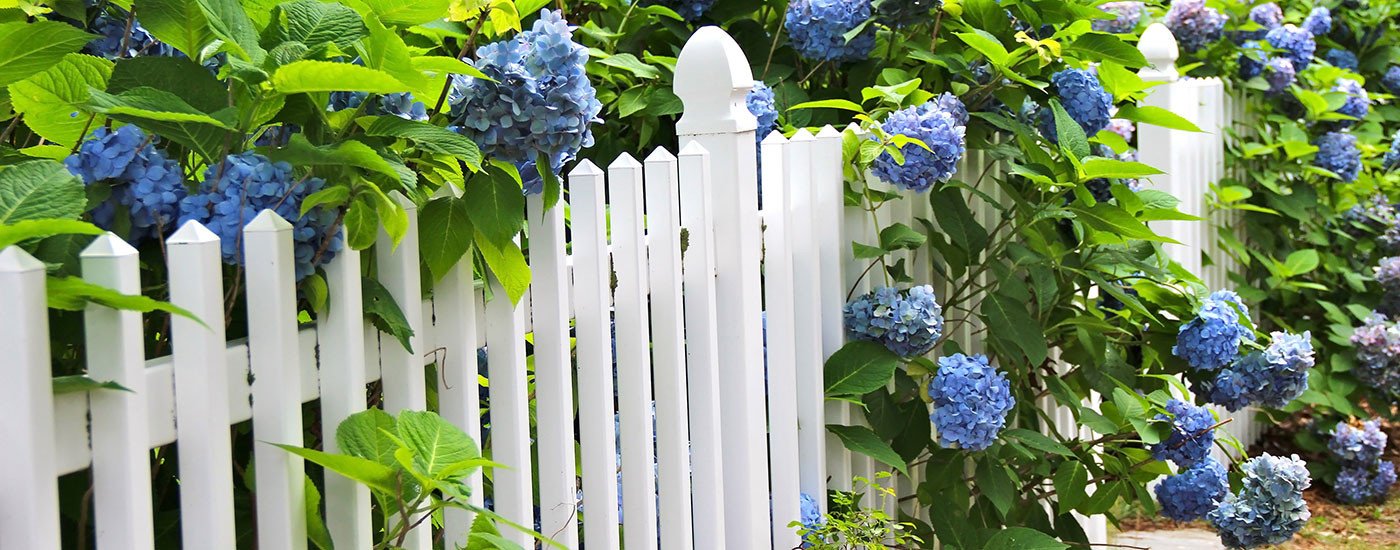When installing a front garden fence, the same factors need to be considered as for a back garden fence: what height can the fence be? do you need planning permission? what is the purpose of the fence and what types of fences are there?
What is the legal height of a garden fence?
The law surrounding garden fences is often misinterpreted, with many people believing that a garden fence should be no taller than 2 metres. In fact, the law says a fence can be as tall as 100 metres, but anything over 2 metres requires relevant planning permission. Fences for front gardens are slightly different and the general rule of thumb is that a fence in a front garden can be half the height of those in the back garden before planning permission is needed. Guidelines can differ from local authority to local authority but where a rear fence can be 2 metres, then the corresponding front garden fence can be no higher than one metre. The addition of fence toppers such as trellis panels will make a difference but our guide What is the legal height for a fence? has lots of helpful information.
What is the purpose of the fencing?
In a back garden, fences mark out the boundary of your property and provide privacy and security. By contrast, a front garden fence is not likely to need to offer privacy or security and may be required simply to mark out your property, perhaps where you have a corner plot that passers-by walk across rather than go round. A timber fence also serves as an attractive finishing touch to your home.
Types of fences for front gardens
As discussed, a front garden fence is usually shorter than a back garden fence which gives the property owner or developer plenty of choice when it comes to types of fencing.
Picket fencing
A traditional choice for front gardens, picket fencing is ideal for marking out boundaries where security or privacy is not an issue. Choose between picket fence panels with pointed or round tops or create your own with wooden picket pales and fence rails. Our article will tell you All about picket fencing.
Post and rail fencing
Popular in rural settings, a post and rail fence is often to be found with livestock or horses. Offering an open aspect, post and rail fencing gives an uninterrupted view, ideal where privacy is not an issue. To find out how to install a post and rail fence, and the materials needed, our guide to post and rail fencing is a must-read.
Lattice fencing
Trellis panels will give a strong and heavy duty boundary to your front garden, as well as a choice of designs. At Witham Timber, we offer square and rectangular panels with omega tops and convex designs and all our panels start at just 300mm (12 inches) in height.
Decorative fence panels
Strong and hardwearing as well as aesthetically attractive, decorative fence panels are available in heights to suit all front gardens. Choose from a classic and elegant square horizontal fence panel, or a more flamboyant trellis curved top fence panel to really reflect the character of your property. With all our decorative fence panels being double sided, it means that you and passers-by will all see the ‘good’ side of the fence too.
At Witham Timber, we have over 40 years’ experience of providing quality timber fencing products to the trade and domestic markets. All our fencing products are manufactured from pressure treated softwood timber for durability and rot resistance. If you have a specific idea in mind for your fencing or you require individual sizes, we are able to offer a bespoke fencing service. To find out more or to ask our experienced sales staff any questions, please call us on 01205 359188 or email us at sales@withamtimber.co.uk

